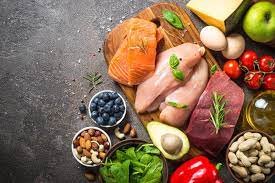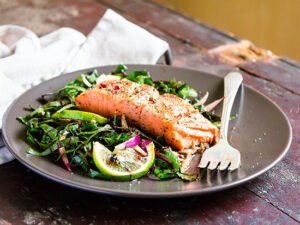Weight loss Strategies for Success
Share on facebook Share on linkedin Share on whatsapp Share on tumblr Share on pinterest Share on telegram Numerous weight-loss tips, fad diets, and outright frauds all make the claim of being quick and simple to lose weight. Still, a good, calorie-restricted diet along with more

Numerous weight-loss tips, fad diets, and outright frauds all make the claim of being quick and simple to lose weight. Still, a good, calorie-restricted diet along with more exercise forms the cornerstone of any effective weight loss program. You must permanently alter your lifestyle and health-related habits in order to lose weight in a long-term, effective manner.
Table of Contents
Introduction
While some people react well to rigorous techniques like calorie tracking, others perform better when given greater latitude when it comes to designing their weight-loss techniques. Allowing them to limit their intake of refined carbohydrates or stay away from fried meals can put them in a successful position. Thus, if a diet that has helped someone else doesn’t help you, don’t give up too easily. Furthermore, if a diet proves to be too severe for you to follow, don’t be hard on yourself. In the end, a diet is only good for you if it’s something you can maintain over time.
Find your inner motivation

You are not able to lose weight by yourself. To gratify yourself, you have to make changes to your food and workout routine. Whether it’s a forthcoming trip or improved general health, write down your priorities to help you stay inspired and concentrated. Next, figure out how to ensure that you can access your motivating reasons when faced with temptation. Consider writing a motivational message to yourself and sticking it on the refrigerator or pantry door. While you must accept responsibility for your own actions in order to lose weight successfully, having the correct kind of support is helpful.
Choose supporters who won’t undermine, shame, or embarrass you and who will instead provide you constructive reinforcement. Find friends who, in an ideal world, will exercise or cook healthy meals with you, listen to your worries and emotions, and share your commitment to leading a healthier lifestyle. Accountability, which is another benefit of joining a support group, can be a powerful incentive to maintain your weight-loss exercise. Be accountable to yourself by regularly checking in with your weight, keeping a log of your diet and exercise regimen, or using digital tools to monitor your success if you would rather keep your weight-loss efforts private.
Enjoy healthier foods

Reduce your total calorie consumption as part of a new eating pattern that supports weight loss. Reducing calories, however, does not have to mean sacrificing flavor, satisfaction, or even convenience in meal preparation. Eating more plant-based foods, such as fruits, vegetables, and whole grains, is one method to reduce your calorie intake. Without sacrificing flavor or nutrients, aim for variety to help you reach your objectives.
Start losing weight by using these suggestions.
- Eat three servings of fruits and four servings of veggies per day.
- Switch to whole grains from refined ones.
- Make use of healthy fats in moderation, such as nut oils, avocados, nuts, nut butters, and olive and vegetable oils.
- Limit your intake of sugar as much as you can, with the exception of fruit’s natural sugar.
- Limit your intake of lean meat and poultry and opt for low-fat dairy products.
Set realistic goals
Setting attainable weight-loss suggestions may seem obvious. But are you really aware of what is reasonable? Aiming to lose 1 to 2 pounds (0.5 to 1 kilogram) per week is a wise long-term strategy. Generally speaking, in order to lose 1 to 2 pounds per week, you must burn 500–1,000 more calories per day than you take in through regular exercise and a reduced calorie diet. 5% of your present weight, at least as a starting point, might be a reasonable objective, depending on your weight. That equals 9 pounds (4 kilograms) if your weight is 180 pounds (82 kilograms). Your chance of developing long-term health issues like heart disease and type 2 diabetes can be reduced even with this degree of weight loss fast.
It’s important to consider both process and end goals while creating new ones. One example of a process objective might be to “walk every day for 30 minutes.” An example of an outcome objective is “Lose 10 pounds”. Setting process goals is important since altering your habits is the key to losing weight, even when result objectives are not necessary.
Change your perspective

If you want long-term, effective weight management, it is not enough to eat healthily and exercise for a few weeks or even months. These routines need to turn into a way of life. Examining your daily routine and eating habits honestly is the first step in making adjustments to your lifestyle.
Try identifying a plan to progressively alter behaviors and mindsets that have undermined your previous attempts at weight loss after evaluating your unique obstacles. If you want to succeed in permanently losing weight, then go beyond just acknowledging your obstacles and make a plan for how you’ll overcome them.
There will probably be a few setbacks here and there. But after a setback, just start over the following day rather than giving up completely. Recall that your goal is to transform your life. It will not occur all at once. Maintain a healthy lifestyle, and the benefits will be worthwhile.
Get active, stay active

Exercise alone won’t make you lose weight, but calorie restriction combined with regular exercise can offer you an advantage. The extra calories you couldn’t lose with diet alone can be burned off with exercise. In addition, exercise strengthens your heart, lowers blood pressure, and improves your mood, among many other health advantages. Maintaining weight loss can also be aided by exercise. Long-term weight loss maintainers, according to studies, engage in regular physical activity.
The frequency, duration, and intensity of your actions determine how many calories you burn. Engaging in consistent aerobic activity, like brisk walking, for at least half an hour on most days of the week is one of the greatest strategies to reduce body fat. To lose weight and keep it off, some people might need to engage in more physical activity than this.
Note: There might be affiliate links mentioned here. We may receive a commission if you purchase a product through an affiliate link. There is no additional charge for you. Please do your own research before making any online purchases.
Cut carbs

Another perspective on weight loss attributes the cause of weight gain to the way the body stores fat following carbohydrate consumption, specifically the function of the hormone insulin. During a meal, the food’s carbs are converted to glucose in your bloodstream. Your body always uses up this glucose before burning fat after a meal to maintain healthy blood sugar levels.
Your body releases insulin in response to eating a meal high in carbohydrates, such as French fries, pasta, rice, or bread, to help your blood absorb all of the glucose. In addition to controlling blood sugar, insulin also blocks fat cells from releasing fat for the body to burn as fuel (because the body’s first goal is to burn off glucose) and promotes the growth of new fat cells to store any excess fat that the body is unable to burn off. You gain weight as a result, which makes you consume more since your body needs more fuel to burn it.
Cut down on sugar and refined carbs

Whether or not you’re trying to reduce your intake of carbohydrates, the majority of us eat foods like white bread, pizza dough, pasta, pastries, white flour, white rice, and sweetened cereals that are high in sugar and refined carbohydrates. But cutting sugar and pastries out of your diet and switching to wholegrain carbohydrates is only part of the answer. Sugar can be found in a wide variety of meals, including pasta sauce, margarine, canned vegetables and soups, and many low-fat items. All of this added sugar is nothing more than a bunch of empty calories and dangerous blood glucose spikes because your body obtains all the sugar it needs from naturally occurring sugar in food.
Cut fat

The tenet of many diets is to avoid eating fat if you wish to avoid becoming overweight. You’ll be inundated with reduced-fat snacks, dairy products, and prepackaged meals as you stroll down any grocery store aisle. Yet, the prevalence of obesity has increased along with our selection of low-fat foods. What then makes low-fat diets ineffective for a greater number of us?
- Not all fat is bad
It’s true that “good” or healthy fats can improve your mood, battle weariness, and help you maintain your weight. While a little delicious olive oil on a plate of vegetables, for example, can make it easier to eat healthily and improve the overall quality of your diet, unsaturated fats found in avocados, nuts, seeds, soy milk, tofu, and fatty fish can help you feel fuller for longer.
- We frequently choose the incorrect trade-offs.
Many of us make the mistake of substituting refined carbohydrates and sugar for fat, which are empty calories. For instance, we consume low- or no-fat yogurt that is heavily sweetened to compensate for the flavor loss rather than whole-fat varieties. Alternatively we substitute our greasy bacon for a muffin or donut that shoots our blood sugar through the roof.
Follow the Mediterranean diet

Eating plenty of fresh fruits and vegetables, nuts, fish, olive oil, and healthful fats and carbohydrates—and very little meat and cheese—is the cornerstone of the Mediterranean diet. However, the Mediterranean diet is more than just a meal plan. Sharing meals with friends and engaging in regular physical activity are also important elements. It’s critical to maintain motivation and steer clear of typical dieting traps, such emotional eating, regardless of the weight loss technique you choose.
Whether or not you’re trying to reduce your intake of carbohydrates, the majority of us eat foods like white bread, pizza dough, pasta, pastries, white flour, white rice, and sweetened cereals that are high in sugar and refined carbohydrates. But cutting candy and desserts out of your diet and switching to wholegrain carbohydrates is only part of the answer. Sugar can be found in a wide variety of meals, including pasta sauce, margarine, canned vegetables and soups, and many low-fat items.
Disclaimer: The information provided in this article is for educational purposes only and should not be considered as a substitute for medical advice. Consult a healthcare professional before implementing any home remedies or making significant changes to your lifestyle.






























































































































